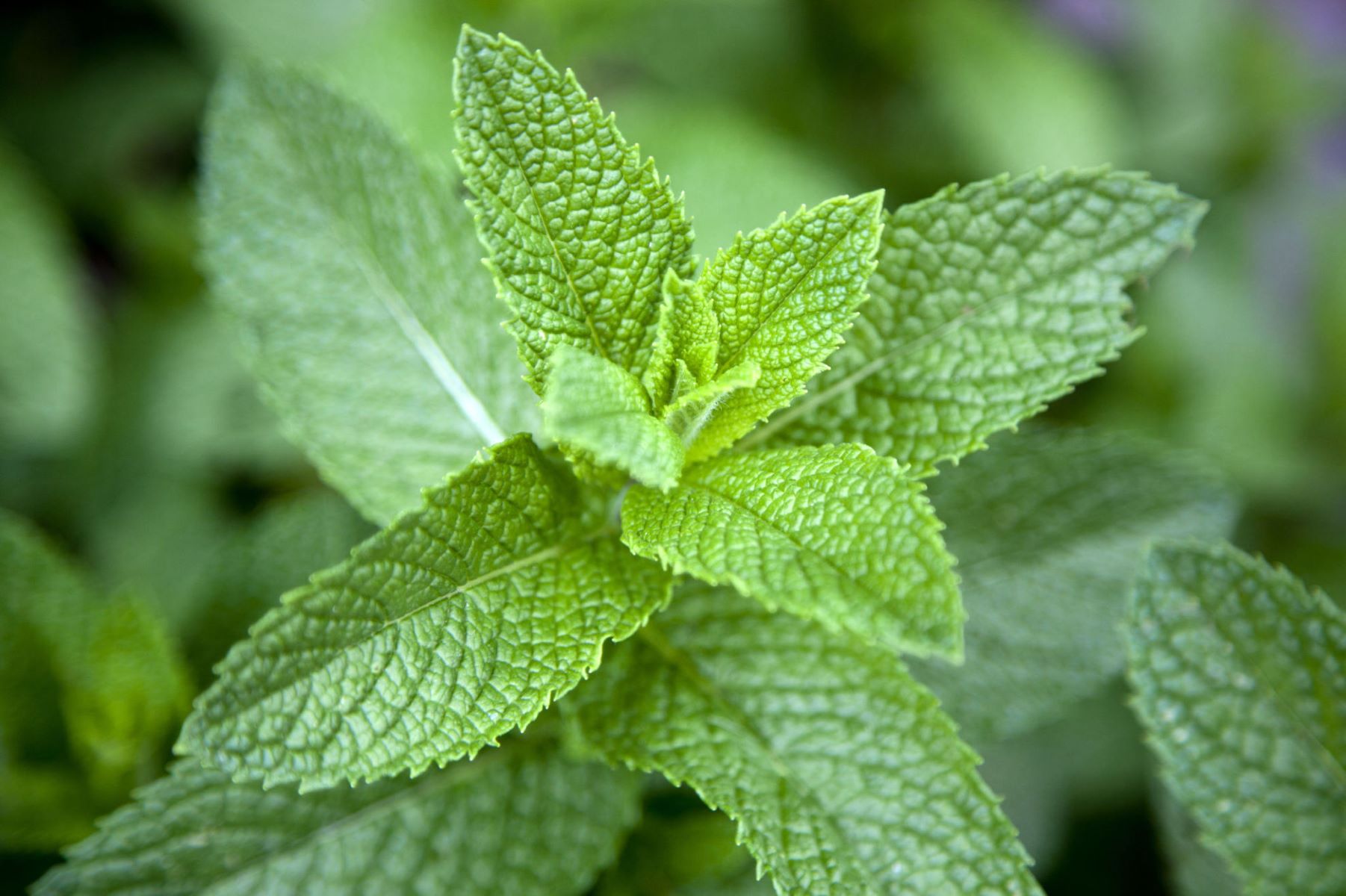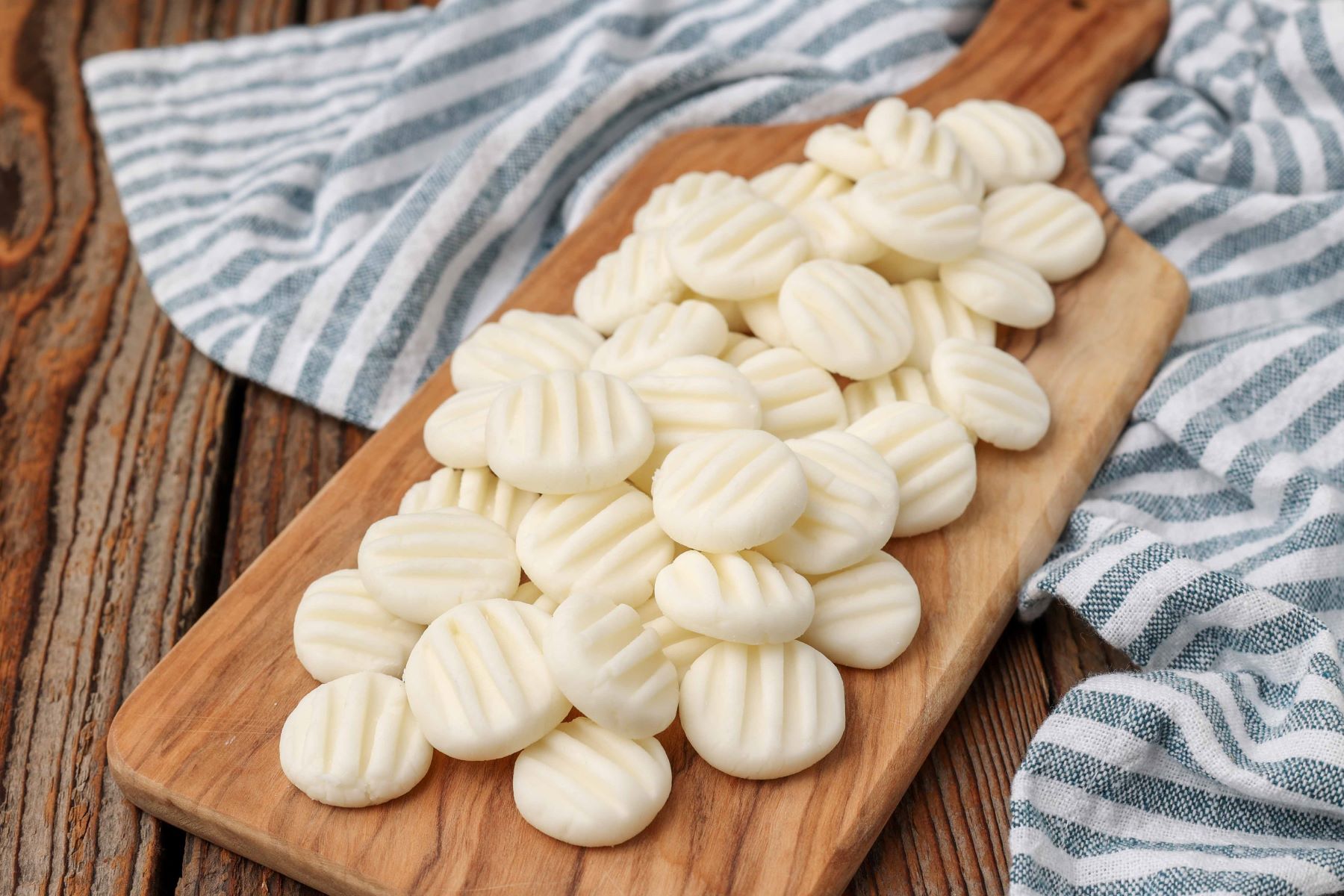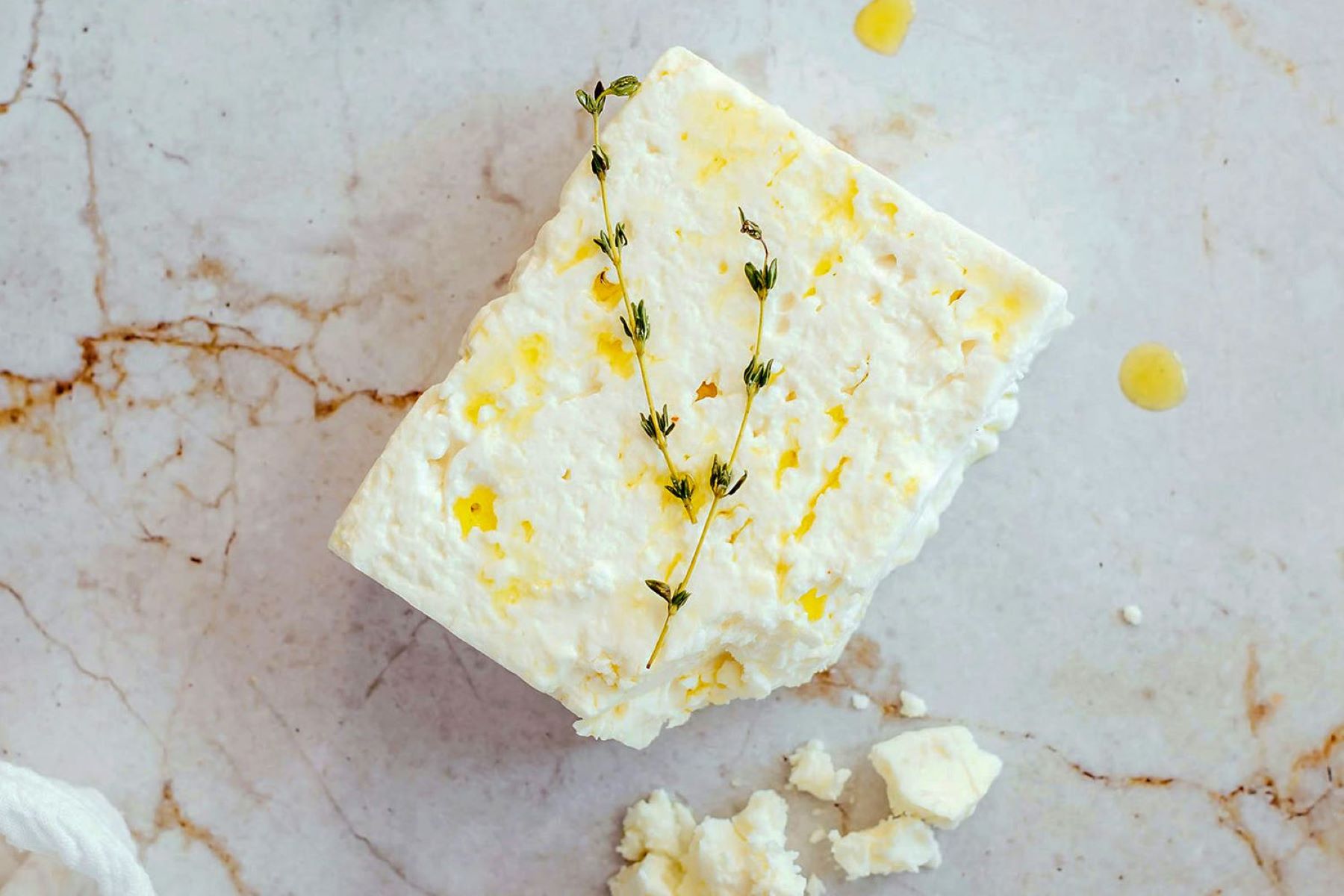Home>Food and Cooking>Surprising Substitute: Mint Instead Of Parsley In Your Recipes!


Food and Cooking
Surprising Substitute: Mint Instead Of Parsley In Your Recipes!
Published: January 31, 2024
Discover a surprising twist in your recipes with mint instead of parsley! Elevate your food and cooking with this unexpected substitute.
(Many of the links in this article redirect to a specific reviewed product. Your purchase of these products through affiliate links helps to generate commission for Regretless.com, at no extra cost. Learn more)
Table of Contents
Introduction
When it comes to adding a burst of freshness and flavor to culinary creations, herbs play an indispensable role. Among the diverse array of herbs that grace our kitchens, parsley and mint stand out as popular choices. While parsley is often hailed for its vibrant color and mild, slightly peppery taste, mint brings a refreshing and aromatic quality to dishes, making it a beloved herb in many cuisines.
In the world of cooking, the art of substitution is a valuable skill that allows for flexibility and creativity in the kitchen. It's a delightful surprise to discover that when parsley is not readily available, mint can step in as a worthy substitute, bringing its own unique characteristics to the dish. This unexpected twist not only adds a new dimension to familiar recipes but also opens up a world of culinary exploration.
In this article, we will delve into the benefits of using mint as a substitute for parsley, explore its versatile applications in various recipes, and provide valuable tips for seamlessly incorporating mint into your culinary endeavors. Whether you're a seasoned chef or an aspiring home cook, embracing the versatility of mint in your cooking repertoire can elevate your dishes to new heights of flavor and creativity. So, let's embark on this delightful journey of discovering the surprising potential of mint as a substitute for parsley in your recipes!
Benefits of Using Mint Instead of Parsley
Mint, with its invigorating aroma and cool, refreshing flavor, offers a delightful departure from the subtle, earthy notes of parsley. Incorporating mint as a substitute for parsley introduces a myriad of benefits that can transform your culinary creations. Here are the compelling advantages of opting for mint over parsley:
-
Distinctive Flavor Profile: Mint's bright, zesty flavor profile infuses dishes with a revitalizing burst of freshness, setting it apart from the milder taste of parsley. Its subtle sweetness and cooling sensation add an intriguing dimension to both savory and sweet dishes, making it a versatile and captivating alternative.
-
Aromatic Appeal: The aromatic allure of mint lends an enchanting quality to dishes, enticing the senses with its captivating fragrance. Its aromatic essence not only enhances the overall dining experience but also contributes to the visual and olfactory appeal of the prepared dishes.
-
Digestive Benefits: Mint is renowned for its digestive properties, known to soothe the stomach and aid in digestion. By incorporating mint into your recipes, you not only elevate the flavor but also introduce a potential health benefit, making it a holistic choice for culinary endeavors.
-
Versatility in Cuisines: Mint's widespread usage in various global cuisines makes it a versatile and adaptable herb. From Mediterranean and Middle Eastern dishes to Southeast Asian delicacies, mint seamlessly integrates with diverse culinary traditions, offering a harmonious blend of flavors and cultural influences.
-
Nutritional Value: Mint is a rich source of essential nutrients, including vitamins A and C, as well as beneficial antioxidants. By incorporating mint as a substitute for parsley, you infuse your dishes with added nutritional value, contributing to a well-rounded and nourishing dining experience.
Embracing mint as a substitute for parsley not only introduces a delightful twist to your recipes but also enriches them with a host of captivating benefits. Its distinctive flavor, aromatic allure, potential health advantages, culinary versatility, and nutritional value make mint a compelling choice for elevating the sensory experience and nutritional profile of your dishes. With these enticing benefits in mind, let's explore the captivating realm of using mint in various recipes, unveiling its remarkable potential in the culinary landscape.
Using Mint in Different Recipes
Mint's versatility extends across a wide spectrum of culinary creations, offering a refreshing twist to both savory and sweet dishes. Its vibrant flavor and invigorating aroma make it a compelling addition to an array of recipes, elevating the sensory experience and infusing dishes with a delightful complexity. Let's explore the diverse ways in which mint can be seamlessly integrated into various recipes, unlocking its remarkable potential in the culinary landscape.
Savory Delights
-
Mint-infused Tabbouleh: In traditional tabbouleh, a vibrant Middle Eastern salad, mint takes center stage alongside parsley, lending its distinct flavor to the medley of fresh herbs. Its bright and refreshing notes complement the nutty richness of bulgur wheat and the tangy accents of tomatoes and lemon, creating a harmonious symphony of flavors.
-
Lamb and Mint Meatballs: Mint's aromatic allure pairs exquisitely with the robust richness of lamb, making it an ideal addition to succulent meatballs. Whether grilled, baked, or simmered in a fragrant sauce, the infusion of mint enhances the savory depth of the dish, adding a tantalizing dimension to each bite.
-
Minty Pea Soup: A velvety pea soup brightened with a touch of mint offers a delightful interplay of flavors. The cool, refreshing essence of mint beautifully complements the sweet, earthy notes of peas, resulting in a vibrant and comforting soup that captivates the palate.
Sweet Indulgences
-
Refreshing Mint Sorbet: Mint's cooling sensation shines in a luscious sorbet, offering a palate-cleansing finale to a meal. Its invigorating flavor, combined with a hint of sweetness, creates a tantalizing frozen treat that refreshes and delights with each spoonful.
-
Mint Chocolate Chip Cookies: The marriage of mint and chocolate in a batch of cookies yields an irresistible combination. The aromatic mint essence intertwines with the richness of chocolate, resulting in decadent, fragrant cookies that leave a lasting impression.
-
Fruit Salad with Mint: A simple fruit salad becomes a culinary masterpiece with the addition of fresh mint. Its aromatic presence elevates the medley of fruits, infusing the dish with a refreshing allure and a delightful contrast of flavors.
Read more: Drambuie: The Secret Ingredient You Need To Know About! Plus, Perfect Substitutes For Your Recipes
Beverage Elegance
-
Mint Mojito: This classic cocktail is a testament to the enchanting allure of mint. Muddled with lime and sugar, mint leaves impart a burst of freshness to the rum-based concoction, creating a vibrant and invigorating libation.
-
Infused Mint Water: A pitcher of ice-cold water infused with mint leaves offers a revitalizing and hydrating beverage, perfect for hot summer days. The subtle infusion of mint imparts a refreshing twist to the water, transforming it into a rejuvenating elixir.
From savory entrees and refreshing beverages to indulgent desserts, the inclusion of mint in various recipes adds a captivating dimension to culinary creations, showcasing its remarkable versatility and sensory appeal. As we continue to explore the culinary landscape, let's uncover valuable tips for seamlessly substituting mint for parsley, empowering you to infuse your dishes with the invigorating essence of mint.
Tips for Substituting Mint for Parsley
When venturing into the realm of substituting mint for parsley in your recipes, a few valuable tips can ensure a seamless transition while maximizing the delightful attributes of mint. Here are essential guidelines to consider:
-
Proportionate Substitution: When replacing parsley with mint, it's crucial to maintain a balanced approach. While mint brings a refreshing twist to dishes, its flavor profile differs from that of parsley. As a general rule, consider using approximately half the amount of mint compared to the recommended quantity of parsley in a recipe. This careful adjustment ensures that the mint's invigorating essence harmonizes with the other ingredients without overpowering the dish.
-
Finely Chopped Mint Leaves: To fully integrate the aromatic and flavorful qualities of mint into your dishes, finely chop the mint leaves before incorporating them. This meticulous preparation allows the essence of mint to infuse the dish evenly, ensuring that each bite or sip carries the refreshing notes of mint, enhancing the overall sensory experience.
-
Timing of Addition: The timing of adding mint to a dish is crucial for optimizing its impact. In most cases, it's advisable to introduce mint towards the end of the cooking process or just before serving to preserve its vibrant flavor and aromatic allure. This strategic timing ensures that the essence of mint remains vibrant, contributing to the dish's captivating appeal.
-
Complementary Pairings: Consider the complementary ingredients in the recipe when substituting mint for parsley. Mint's refreshing and slightly sweet undertones harmonize exceptionally well with a variety of ingredients, such as lamb, peas, citrus fruits, and chocolate. Understanding these flavor affinities allows you to craft harmonious flavor combinations and elevate the overall culinary experience.
-
Culinary Creativity: Embrace culinary creativity and experimentation when substituting mint for parsley. While traditional recipes provide a solid foundation, don't hesitate to explore unconventional pairings and innovative applications of mint. Whether infusing mint into sauces, dressings, or marinades, or incorporating it into unexpected dishes, such as grilled fruits or herbal teas, the possibilities for culinary exploration are boundless.
By incorporating these insightful tips into your culinary endeavors, you can seamlessly substitute mint for parsley, unlocking a world of refreshing flavors and captivating aromas in your recipes. With a nuanced understanding of these guidelines, you are empowered to infuse your dishes with the invigorating essence of mint, creating culinary delights that captivate the senses and elevate the dining experience.
Conclusion
In the realm of culinary exploration, the surprising potential of mint as a substitute for parsley unveils a captivating journey of flavor and creativity. As we conclude this delightful exploration, it becomes evident that mint, with its distinctive flavor profile, aromatic allure, and versatile applications, emerges as a compelling alternative to parsley in a myriad of recipes.
By embracing mint as a substitute for parsley, culinary enthusiasts and home cooks alike can infuse their dishes with a revitalizing burst of freshness and complexity. The benefits of using mint extend beyond its invigorating flavor, encompassing its potential digestive properties, culinary adaptability, and nutritional value. Whether incorporated into savory entrees, sweet indulgences, or refreshing beverages, mint elevates the sensory experience of dishes, adding a delightful twist that captivates the palate.
The seamless integration of mint into various recipes opens the doors to a world of culinary possibilities, inviting individuals to explore new flavor combinations and indulge in the aromatic symphony of mint-infused creations. From mint-infused tabbouleh and lamb meatballs to refreshing sorbets and invigorating mojitos, the versatility of mint shines through, enhancing the dining experience with its captivating essence.
Furthermore, the valuable tips for substituting mint for parsley empower cooks to navigate this flavorful transition with confidence and finesse. By carefully considering proportionate substitution, finely chopping mint leaves, strategic timing of addition, understanding complementary pairings, and embracing culinary creativity, individuals can seamlessly integrate mint into their recipes, unlocking its remarkable potential while harmonizing with other ingredients.
In essence, the surprising substitute of mint for parsley not only introduces a delightful twist to familiar recipes but also encourages culinary exploration, creativity, and a deeper appreciation for the diverse array of herbs at our disposal. As we embark on this flavorful journey, let us embrace the versatility and enchanting allure of mint, allowing it to infuse our culinary creations with a refreshing twist that tantalizes the senses and elevates the art of cooking to new heights.
With each mint-infused creation, we celebrate the delightful interplay of flavors, the aromatic symphony of herbs, and the boundless potential for culinary innovation. As you venture into your kitchen, consider the remarkable versatility of mint and the surprising joy it brings as a substitute for parsley, enriching your dishes with its invigorating essence and captivating allure. Embrace the unexpected, savor the refreshing notes of mint, and let your culinary creations shine with the delightful surprise of this remarkable herb.














